The History Of Esan People Of Nigeria
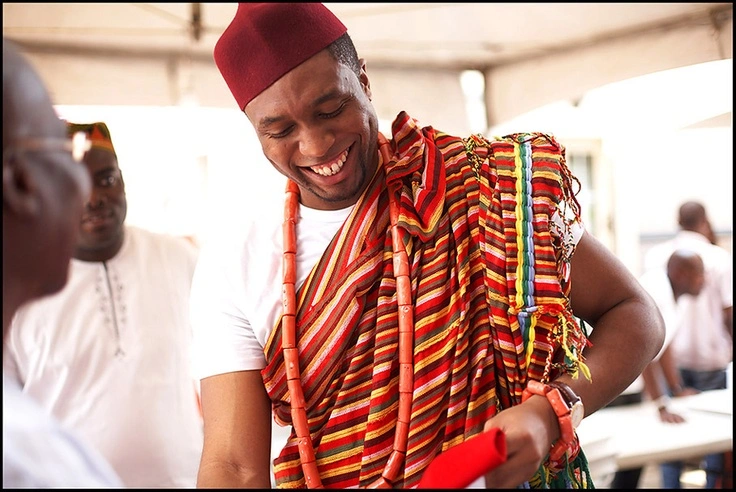
It is estimated that by 2022, the Esan people, or those residing in the Esanland of Nigeria is about 1.5 million. The Esan people also have a strong community in the diaspora. But who really are these people whose land has been inhabited for more than 3000 years?
Download the first chapter of The Storytelling Series: Beginners’ Guide for Small Businesses & Content Creators by Obehi Ewanfoh.
This writing is recreated from publicly available data sources such as Wikipedia, books, and articles.
Who are the Esan People Of Nigeria of Nigeria?
The Esan people or (Ẹ̀bhò Ẹ̀sán) in Esan language are an ethnic group of south-south Nigeria who speaks the Esan language and has a common culture and history. The people are known for their subsistence agricultural practices, knowledge of traditional medicine, soldiering, and hunting.
The crops they cultivate include palm trees, Irvingia gabonensis (erhonhiele), Cherry (Otien), bell pepper (akoh) coconut, betel nut, kola nut, black pear, avocado pear, yams, cocoyam, cassava, maize, rice, beans, groundnut, bananas, oranges, plantains, sugar cane, tomato, potato, okra, pineapple, paw paw, and numerous vegetables.
You might also like to read – Esan Unity: The Bedrock For Sustainable Development
The modern Esan nation is believed to have been organized during the 15th century, when citizens, mostly nobles and princes, left the neighboring Benin Empire for the northeast.
They formed communities and kingdoms called Eguares among the indigenous peoples whom they met on the land.
How many are the autonomous kingdoms in Esanland?
In Esanland, covering 2,800 square kilometers, there are some 35 established autonomous kingdoms including:
- Irrua,
- Uromi
- Ekpoma
- Ubiaja
- Igueben
- Ewu
- Ugbegun
- Opoji
- Uzea
- Ogwa
- Ujiogba
- Urohi
- Egoro
- Ukhun
- Ewohimi
- Ewatto
- Ugboha
- Okhuesan
- Emu
- Ohordua
- Oria
- Onogholo
- Orowa
- Iyenlen
- Urho
- Illushi
- Ifeku
- Ebelle
- Ewossa
- Ekpon
- Amahor
- Ugun
- Udo
The Esan people primarily speak the Esan language, an Edoid language related to Edo, Urhobo, Owan language, Isoko, and Etsako. It is considered a regionally important language in Nigeria, and it is taught in primary schools in addition to being broadcast on radio and television. The Esan language is also recognized in the Census of the United Kingdom.
You might also like to read – Esan Geography And Topography – South of Nigeria
Esan-speaking communities exist in the United States, the United Kingdom, South Africa, Canada, Spain, and Italy. Pan-Esan groups such as the Esan World Congress have kept the Esan community tight-knit.
Pre-historical/classical period of Esan
According to archaeological and linguistic evidence, humans have resided in the savannah-forest ecotone in Esanland for at least 3000 years ago.
Starting from 500 AD to 750 AD, these hunter-gatherers started to colonize the savannah-forest ecosystem of Esanland and the forest ecosystem of the Benin Empire.[15] They created a pre-Esan, pre-Edo society that built advanced structures such as moats and walls around family properties.
These enclosures were, at maximum, three to five kilometers in diameter, and demarcated residential and agricultural property. Those properties enlarged to become villages, and by 800 AD, these villages coalesced to form kingdoms with hierarchies.
Modern-day digs in the region have found that these walls were situated in the eastern Benin Empire and northern Esanland. Settlements were close to permanent springs on the northern plateau, but never next to intermittent springs.
Edo influence on Esan
The biggest influence on Esanland came from Edo people, the founders of the Benin Empire. This is particularly evident in Esan culture and language.
In 1460, Oba Ewuare passed laws of mourning that prohibited sexual intercourse, bathing, drumming, dancing, and cooking. These laws proved too restrictive for many citizens, and these citizens fled the kingdom to Esanland.
This exodus shaped Esanland’s modern cultural identity and gave rise to the term “Esan,” or “refugee.” Oral tradition has heavily supported this theory. Prominent Esan and Edo historians have collected stories about this migration.
The term Esan has been applied to the Esan people for thousands of years and was used before the first contact with Europeans.
It is believed by many historians that the name ‘Esan’ (originally, ‘E san fia’) owes its origin to Bini (meaning, ‘they have fled’ or ‘they jumped away’ from an uncomfortable system).
‘Ishan’ is a mispronounced form of ‘Esan’, the result of colonial Britain’s inability to properly pronounce the name of the ethnic group.
Check out also this article – Esan Entrepreneurship (The Value Of Handwork)
It is believed that similar corruption has affected such Esan names as ubhẹkhẹ (now ‘obeche’ tree), uloko (now ‘iroko’ tree), Abhuluimẹn (now ‘Aburime’), etc.
Esan Wars with Beni
The Uzea War occurred during the 16th century. This war was between the Uromi Kingdom and the Benin Kingdom. The war lasted from 1502 to 1503, and resulted from a refusal of friendship from Oba Ozolua of Benin by Onojie Agba of Uromi. The war ended in the town of Uzea, when both leaders were killed.
To Esan and Uromi in particular, Agba N’Ojie of Uromi will always be remembered.
Agba N’Ojie of Uromi, originally called Agba or Agba N’Ojie (Esan God of War), was the King of the Esan people from 1483 AD until 1507 AD. He was an important Onojie within the history of the Esan people. He was instrumental in the independence of Esanland from the old Benin Empire.
He stopped tributes from Enijies in Esanland from being paid to the Oba of Benin, and stopped any appeal cases being taken from Esanland to the Oba’s Palace of Benin for retrial during the time of Ozolua n’Ibarmoi (or Ozolua the Conqueror).
However, in peaceful times, Esan kingdoms would loan soldiers to the Benin Kingdom, such as during the Idah War of 1515-1516, and the sacking of Akure in 1823.
During the nineteenth century, northern Esanland was continually attacked and sacked by the Muslim Nupe people in the hunt for slaves and converts to Islam, having previously taken over the Kukuruku peoples’ lands. Many Esan kingdoms from the south helped in the battle to fend off the Nupes.
The battles came into the Esans’ favor; several Nupe and Etsako warriors were brought into Esan cities where their posterity resides today. The nineteenth century brought the increasing influence of Europe on Esanland, as the English demanded palm products.
Esan Wars with the British
In 1897, the British sacked the Benin Empire, effectively leaving the Esans free from British rule.
In 1899, the British led an invasion into the Esan kingdoms that lasted for seven years. Esanland proved to be harder to conquer than the Benin Kingdom because of its strong autonomy: Kingdoms chose to keep fighting the British even if its neighbors fell.
Fallen Benin chiefs like Ologbosere and Ebohon were still resistant to British rule inadvertently guarded Esan soil from the west, by establishing military camps and blocking roads. This lasted from 1897 to April 22. 1899, where Ologbosere surrendered at the border village of Okemue.
Here is another article you might like – Religion And Spirituality Among The Esan People of Nigeria
The first kingdom to be attacked by the British was the Kingdom of Ekpon. Ekpon launched a fierce resistance against the British invasion on April 22, which nearly destroyed the kingdom.
After the near genocide of Esans at Ekpon, the kingdom of Ekpon led an ambush of the British camp at Okueme, on April 29.
This led British forces to retreat, consolidate their power, and kill Ologbosere in May. Subsequent attempts by the British failed as well: conquests into Irrua, for example, led to an adoption of a guerrilla warfare strategy followed by a retreat; this method was so successful that other Esan kingdoms adopted it and the British did not invade Esanland until 1901.
On March 16, 1901, the Kingdom of Uromi, headed by the old, yet intelligent Onojie Okolo, was attacked by the British. The Uromi resistance, led by Prince Okojie, was swift and employed guerrilla warfare.
After a short time, British forces overtook the village of Amedokhian, where Okolo was stationed, and murdered him. This angered Prince Okojie so much that he killed the Captain of the British troops before reinforcements were brought in.
The British then realized that Uromi was nigh impenetrable without native help, and contact local sympathizers such as Onokpogua, the Ezomo of Uromi. This succeeded in napping Prince Okojie out of the forest and deported him to the British offices at Calabar.
Esan Geography
Esan land is bordered to the south by Benin City, to the south-east by Agbor, to the north and east by Etsako, and to the west by River Niger. From Ewu to Benin City, the State capital is 100 km long.
No accurate demographic data on the people is available and the various local governments in Esan appear to lack reliable information in this direction.
The people populate areas such as Uromi, Ewohimi, Ewatto, Igueben, Irrua, Ubiaja, Ogwa, Ebelle, Ekpon, Ewossa and Amahor, Ekpoma, Ohordua and Ewu in central Edo State, South-South Nigeria.
It has a flat landscape, lacking in rocks and mountains, and good for agricultural purpose. The topography of Esanland Ekpon plateau starts its rise from Ekpon and into six miles slope to Ewohimi, creating “Ekpon mini-Plateau”.
Check out also this article – Agricultural Practices in Esan land, Nigeria
Ekpon is the gateway to Esanland, South East and the first of Esanland Kingdom therein as a border town, where centuries of contacts with neighbors south in the Niger Delta, have influenced its Esan dialects by its earlier contacts through subsistence agriculture with the Ika speaking people of Igbanke, Oligie Igbodo etc.
- PRESENT DAY LOCAL GOVERNMENT AREAS
- Esan West L.G.A., with it’s headquarter in Ekpoma
- Esan Central L.G.A., with it’s headquarter in Irrua
- Esan North East L.G.A., with it’s headquarter in Uromi
- Esan South East L.G.A., with it’s headquarter in Ubiaja
- Igueben L.G.A. with it’s headquarter in Igueben.
Agriculture in Esan
Rubber trees (used for the production of plastic products) and palm trees rank highest among Esan trees. The land’s variety of fruits range from mango, orange (ate), grapes, pineapples (edinebo), guava, cashew, banana (oghede), plantain, black pear, avocado pear, lime to walnut and even more.
Cassava, yam, cocoa yam, sweet potato, pepper, okra and rice are some of its farm produce. It has numerous streams that are too small to afford fishing.
Cultural Entertainment
Esan dance is dominated by the Igbabonelimhin, an acrobatic dance performed mostly by young males. Igbabonelimhin involves spinning and somersaulting to a timed beat. This dance was mostly performed at New Year’s.
Today, the dance is taken as a unique symbol for Esans everywhere.
Other highly entertaining dances include, Agbenojie, Uleke, Ukinabojie, Asonogun, Abayon, Ojeke, etc.
Among musical instruments, the akpata, an African harp, is common among traditional Esan storytellers who would tell stories known as Ulogho.
Religion And Festivals
Today, Esan People are mainly Christians. Over the centuries, Christianity spread across the Esan community. The New Yam Festivals of the Esan people are celebrated from September to November and are collectively referred to as ‘’Ihuan’’.
Food
Esan people are addicted to pounded yam with ogbono soup and bush-meat. Their native black soup, omoebe is a must! They however appreciate other Nigerian cuisines.
Dressing
For the men, Ukpesan is the traditional attire. It is mostly worn at weddings and important events.
The Esan people also dress in an ashobi (a headpiece, a blouse and a long skirt) and traditional village garments.
Military
Esan kingdoms did not have standing armies; rather, kingdoms set up emergency programs in which all of the able-bodied men in the said kingdom would fight.
If a kingdom was attacked, the onojie would contact the edionwele to mobilize the forces. The onojie or odionwele would then appoint a commander, or ‘’okakulo’’ to control forces.
The ‘’okakulo’’ would usually be a noble, physically strong, of the ‘’Igene’’ age group and a feared medicine man and man of valour.
Typical Esan weapons would include the bow and arrow, crossbow, barbed cudgel and machete, in addition to Dane guns used after the fifteenth century.
War would be declared if the kingdom was attacked, if a wife was seized, or if a man was killed (if the latter two occurred, the kingdom could choose to make reprisals.
Download the first chapter of The Storytelling Series: Beginners’ Guide for Small Businesses & Content Creators by Obehi Ewanfoh.

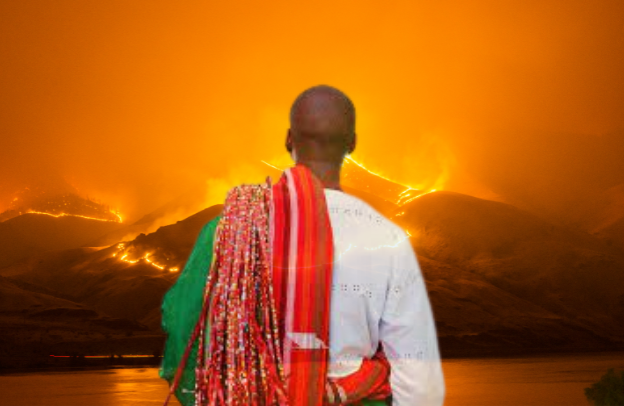
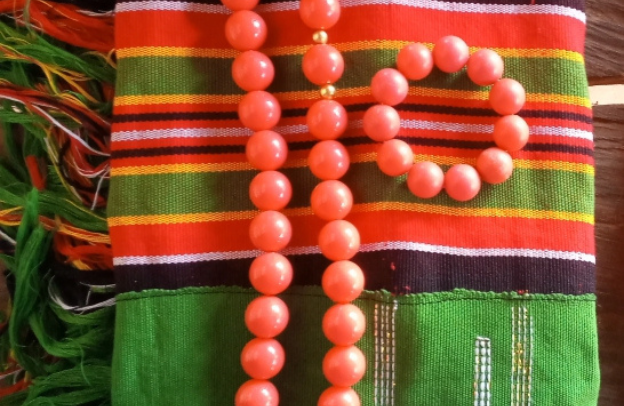

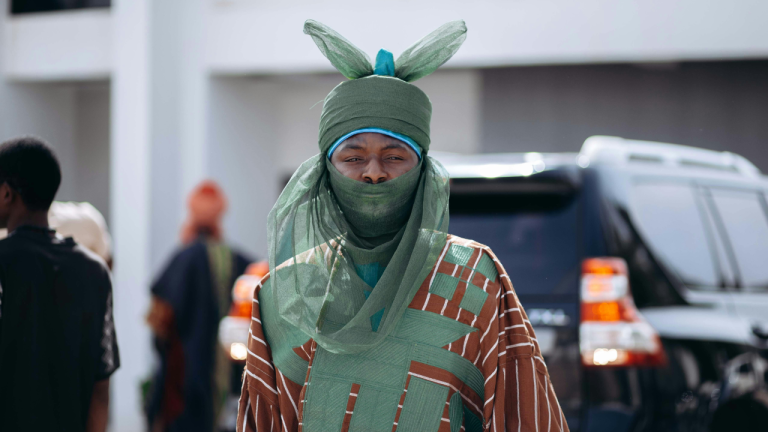

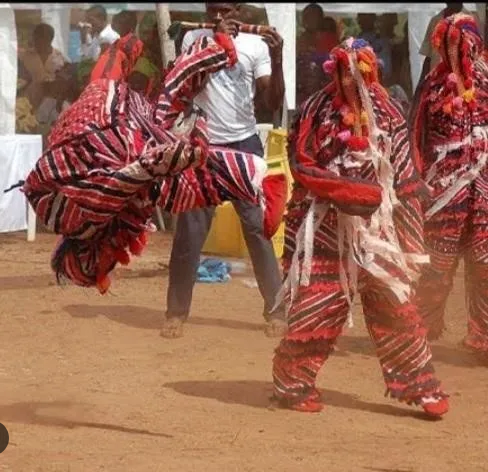
One Comment